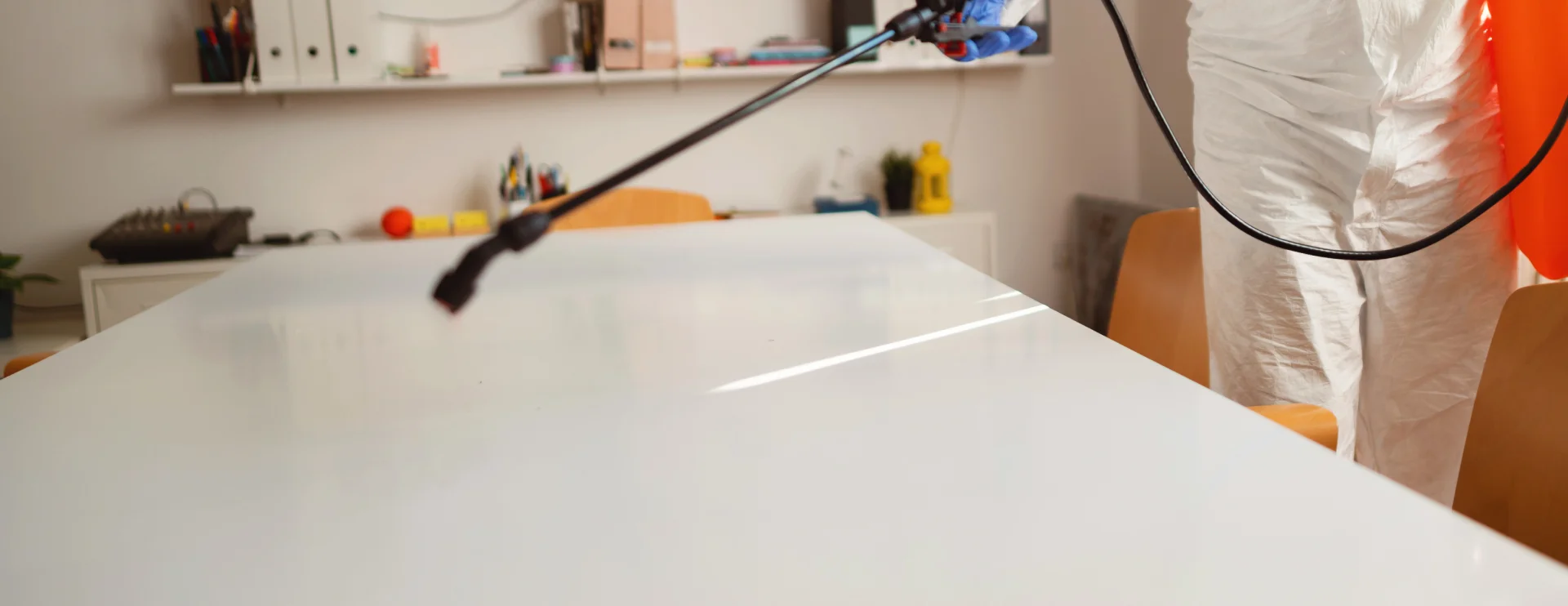Do-it-yourself Bed Bug Control
Dealing with bed bugs is challenging, and depending on the level of infestation, it can take weeks for a novice to completely eliminate them. Your success rate depends on various factors, such as the number of bed bugs present, the amount of clutter for them to hide in, whether your neighbors have bed bugs, and the participation of all residents in a building.
Everyone in the household must cooperate and contribute to the efforts for effective results.
The following steps will help you begin:
- Identify the problem
- Develop a plan
- Prevent the infestation from spreading
- Prepare for treatment
- Eliminate the bed bugs
- Evaluate and prevent
You might need to repeat these steps multiple times to eradicate all bugs and their eggs.
Identify the Problem
- Identify the pest: Collect a pest sample to show a pest control expert. Often, they can identify pests at no cost to you, as they are trained in pest control and know the local area.
- If an expert identifies the pest as a bed bug, inform your landlord if you live in an apartment. The units nearby should be inspected, as landlords may be responsible for participating in treatment. Check the housing codes and laws in your area.
- Inspect all areas with bed bugs: Check surrounding living spaces to assess the extent of the infestation.
Develop a Plan
- Create a schedule: Include personal plans like vacations to complete the steps below.
- Maintain records throughout the process: Note dates and exact locations where pests are found to track progress and target efforts effectively.
- Continue monitoring for at least a year after treatment to ensure all bed bugs are gone.
Prevent the Infestation from Spreading
- Seal small hiding spots: Use silicon caulk to seal cracks and crevices, eliminating hiding places and forcing bugs into the open.
- Remove infested items: Place them in a sealed plastic bag for treatment. Items that cannot be treated should be stored in a sealed bag or container for up to a year to ensure any active bugs are dead.
- Purchase protective covers for mattresses and box springs: These covers trap bed bugs inside, leading to their eventual death.
- Vacuum regularly: Seal the bag tightly and immediately dispose of it in an outdoor trash container.
- Responsibly discard furniture if it cannot be treated: Destroy it to prevent others from bringing it into their homes. For example, rip covers, remove stuffing, and use spray paint to mark furniture with “Bed Bugs.” Have infested items picked up promptly by the sanitation department
- Do not discard furniture if bed bugs can be safely eliminated.
Prepare for Treatment
Proper preparation is crucial for effective monitoring of remaining bed bugs. Complete these steps regardless of whether you’re treating yourself or hiring a professional.
- Learn more about preparing for treatment.
Eliminate the Bed Bugs
- Ensure chosen methods are safe, effective, and legal: See “What’s Legal, What’s Not” for guidance.
- Avoid ineffective treatments: Rubbing alcohol, kerosene, and gasoline can harm your family and are flammable. Sticky traps are not for bed bugs but may catch spiders, cockroaches, and other insects.
- Consider non-chemical methods: Some options may work better than others, depending on the situation. These methods can be helpful but might not completely eradicate the infestation:
- Heat treatment: Use a clothes dryer on high heat or black plastic bags in a hot, closed car in the sun. Success depends on climate and other factors. DIY heat treatments might not work; professionals have more intensive methods to treat whole houses. Do not attempt to kill bed bugs by raising indoor temperatures with a thermostat, propane heater, or fireplace—this is dangerous and ineffective.
- Cold treatment: Freezing can work if the freezer is set to 0°F. Most home freezers aren’t cold enough to kill bed bugs. Items must be sealed in a bag and left in the freezer at 0°F for three days. Always check the temperature with a thermometer.
- Steam cleaners: Use steam cleaners (wet or dry) to treat cracks and fabrics in carpets, baseboards, bed frames, and furniture. The steam temperature should be at least 130°F without forceful airflow, which can scatter bed bugs. Use a diffuser to prevent scattering.
- If necessary, hire a pest management professional or use pesticides carefully:
- Choose EPA-registered pesticides that list bed bugs on the label.
- Use foggers (bug bombs) with extreme care: Ensure bed bugs are listed on the label. Improper use can pose health risks or cause fires and explosions. Foggers shouldn’t be the sole method of bed bug control, as the spray won’t reach hidden areas. See “Should I Use a Fogger?” for more information.
- Regularly check for bed bugs after cleanup: If bed bugs are found, either some were missed initially or eggs have hatched. Retreatment may be necessary. Consider different types of pesticides for repeated treatments.
- Desiccants (chemicals that dry out bugs): These can be effective as they dehydrate bed bugs, preventing resistance development. However, they may take months to work. Use only EPA-registered pesticide products.
- Avoid pool or food-grade diatomaceous earth: This type, made from fossilized remains of diatoms, can harm you if inhaled. Pesticide-grade diatomaceous earth uses different diatom sizes, reducing hazards.
- Bed bug interceptor traps: Place these under furniture legs to catch and prevent bed bugs from climbing up. Both commercial and DIY interceptors are available. Follow these steps to make your own traps:
- Gather materials:
- Two clean plastic containers with sturdy, tall sides (over 1 inch; one should fit inside the other). Repurposed deli or takeout containers work well.
- Masking or painter’s tape with a rough texture.
- Talcum powder.
- Create the trap:
- Ensure the small container is large enough to hold a bed or couch leg.
- Apply masking tape around the larger container’s exterior so bed bugs can climb in.
- Secure the smaller container inside the larger one using glue or tape.
- Sprinkle talcum powder into the bottom of both containers. Talcum is slippery and traps bed bugs inside.
- Make enough traps: Place them under each leg of infested furniture like beds, couches, or chairs. Move furniture a few inches from walls, ensuring no linens touch the floor—only the furniture legs.
- Check and clean interceptors weekly: Reapply talcum powder as needed. Dispose of captured bed bugs in a sealed plastic bag.
- Gather materials:
Evaluate and Prevent
Continue inspecting for bed bugs at least every seven days, including monitoring interceptor traps, to ensure no eggs remain.

